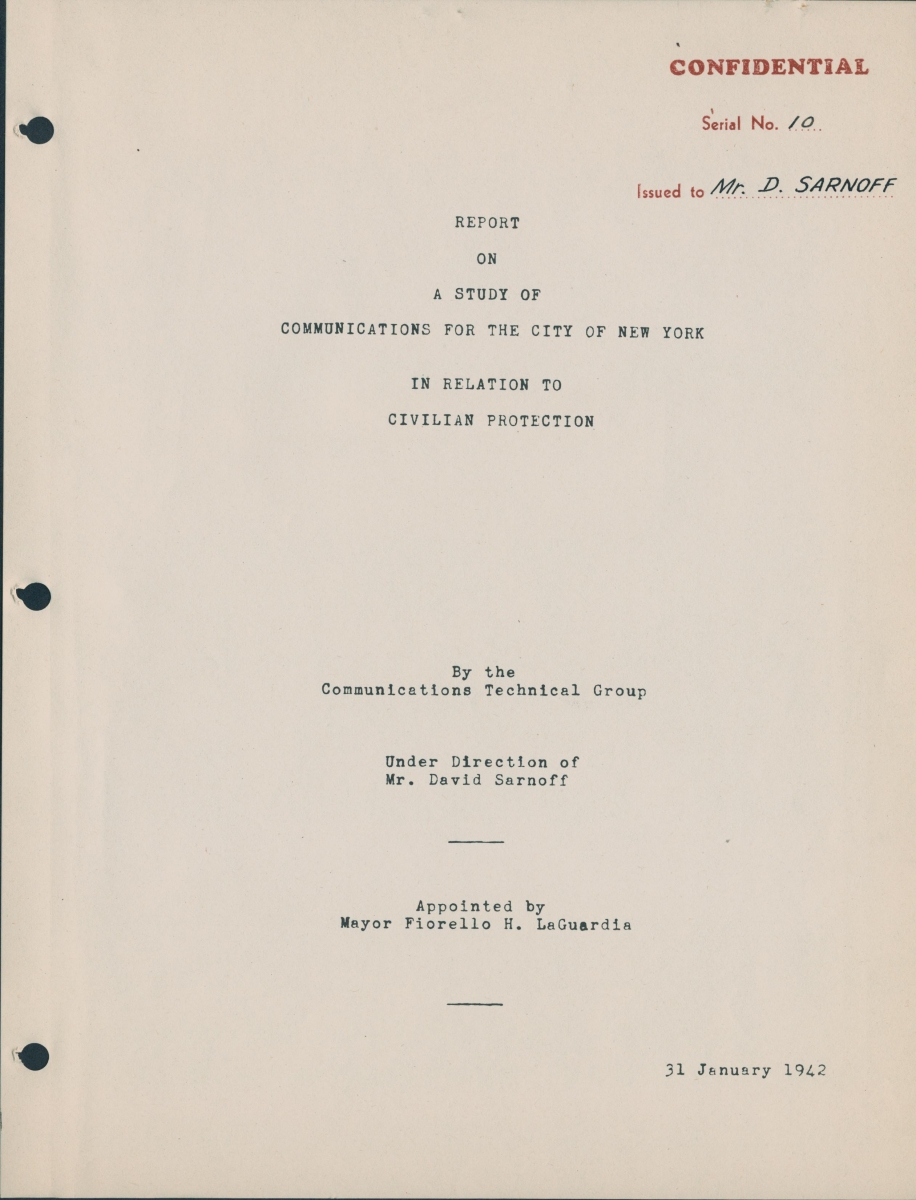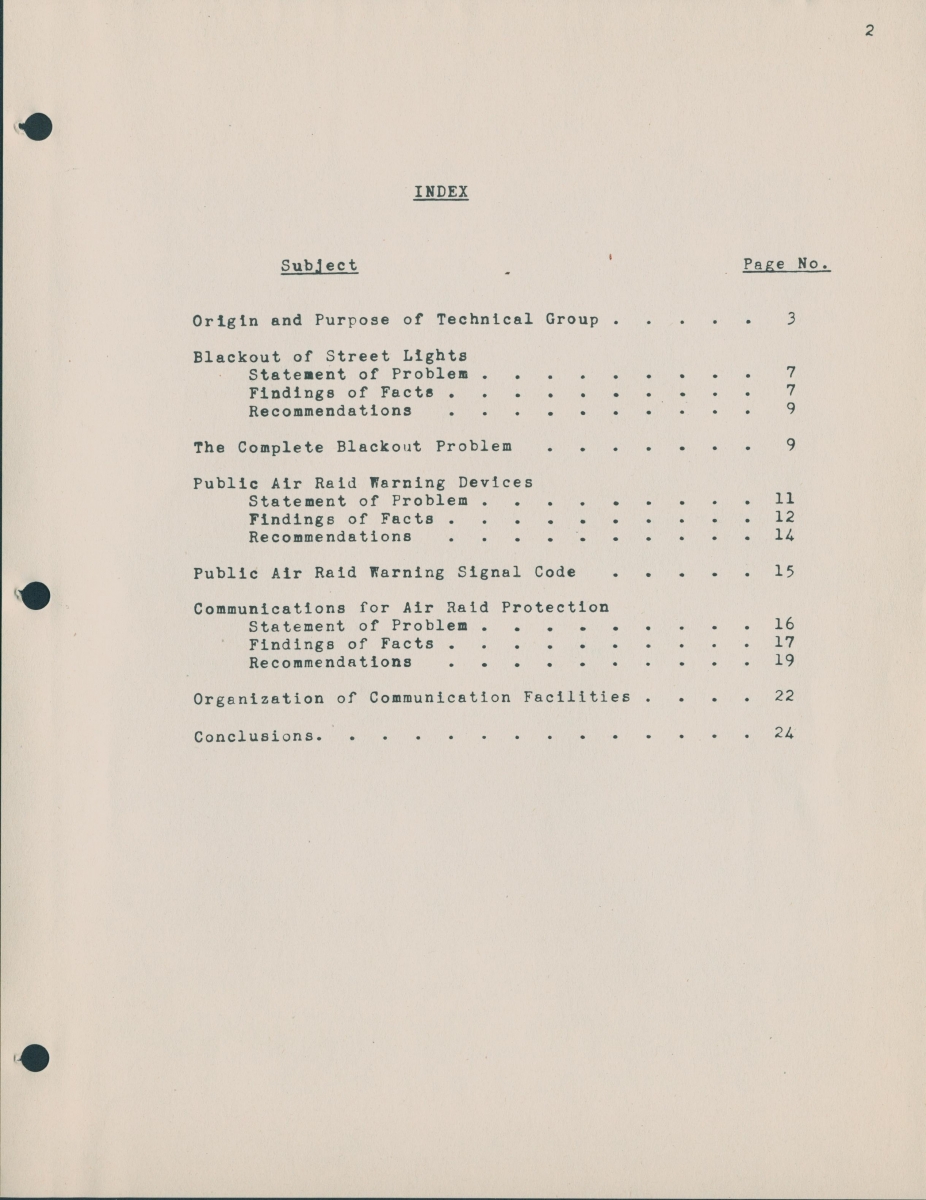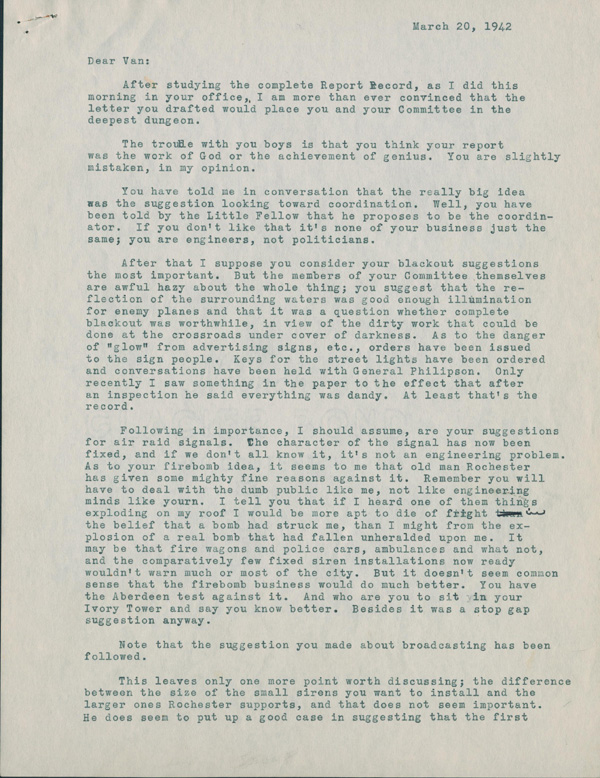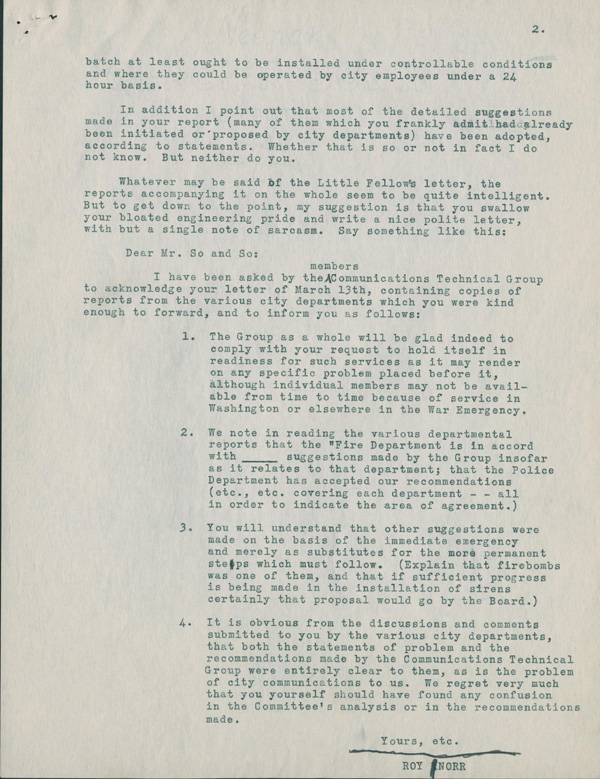After the Japanese attacked Pearl Harbor on December 7, 1941, many Americans became alarmed at the possibility of air raids on American cities. Having never faced this threat before, municipal governments were unprepared to provide effective warning systems.
In New York City, Mayor Fiorello H. LaGuardia appointed David Sarnoff head of a "Communications Committee" on December 16. However, the details were not worked out until Sarnoff met with LaGuardia on December 31.
On January 3, Sarnoff sent a letter to LaGuardia recommending the formation of a committee to study communications methods "to give the public instant warning of approaching danger." LaGuardia then formally authorized the committee’s formation in a letter of January 6th. At some point, the Mayor also requested the committee study blackout problems.
Designated the Communications Technical Group of New York City, the committee was chaired by Sarnoff. Arthur Van Dyck (head of RCA's License Laboratory) served as executive secretary. Representatives from the Columbia Broadcasting System, National Broadcasting Company, Mutual Broadcasting System, Mackay Radio & Telegraph Company, Western Union Telegraph Company, New York Telephone Company, and the Postal Telegraph-Cable Company made up the rest of the committee.
Although they made several preliminary reports on particularly urgent issues, their final report was submitted on January 31.


The 36 detailed recommendations in the report (34 for "immediate action") focused on the technical and organization obstacles to disseminating air raid warnings. As many of the recommendations would take time to implement, the committee suggested the use of "fireworks mortars and bombs" as a stopgap measure.
Having emphasized the importance of speed, the committee was deeply frustrated by the resulting silence from the Mayor's office. By mid-February, the press had learned of the existence of the report and speculated on LaGuardia's reasons for withholding it. Unbeknownst to the committee, LaGuardia had finally sent the report to the relevant city departments for their comments on February 16. The departments agreed with some of the committee's suggestions, although they noted that many of these were already being implemented. On the other hand, they strongly disputed some of the committee's conclusions, particularly the idea of using fireworks as a warning signal.
On March 13, LaGuardia sent the committee the department responses and politely, but clearly, downplayed the usefulness of the study. In a remarkably insightful paragraph, LaGuardia wrote:
If the Axis wins the war or if the war results in a negotiated peace, American cities will necessarily have to be not only reorganized but rebuilt. Therefore it is necessary to win the war and to do so we must provide the best possible civilian defense both in physical protection as well as morale. The morale becomes important if we are to avoid public clamor and demand on our national government which would detract from the war production program or divert war plans from offensive operations to localized defense efforts.
Perhaps as the hysteria from the initial months of the war had receded, LaGuardia had come to regret having formed the committee.
On March 16, Van Dyck drafted an angry response to LaGuardia and gave it to Sarnoff for review. He then noted "Mr. Sarnoff read draft and said good…would like Mr. Norr to see it."
The subsequent, rather direct, memo from Roy Norr is worth reproducing in full:


In a note attached to the memo, Van Dyck's secretary quipped "Evidently he is trying to convey his dislike of the letter you wrote the Mayor." On March 23, Van Dyck shot back an equally blunt memo to Norr.
Finally, on March 28, Van Dyck sent out a polite response from the committee to LaGuardia. The text had been written by Sarnoff and Norr.
The above sketch of the activities of the Communications Technical Group of New York City was drawn from the extensive drafts, background material, and meeting records in the David Sarnoff papers. Most of the files were held by Arthur Van Dyck until April 1943, when he sent them to Sarnoff's office before going on leave. There they were combined with Sarnoff's own files on the committee. In 1988, Don Stackhouse donated them to the David Sarnoff Research Center.
Dan Michelson is a Sarnoff Project Archivist in the Manuscripts and Archives Department at Hagley.
